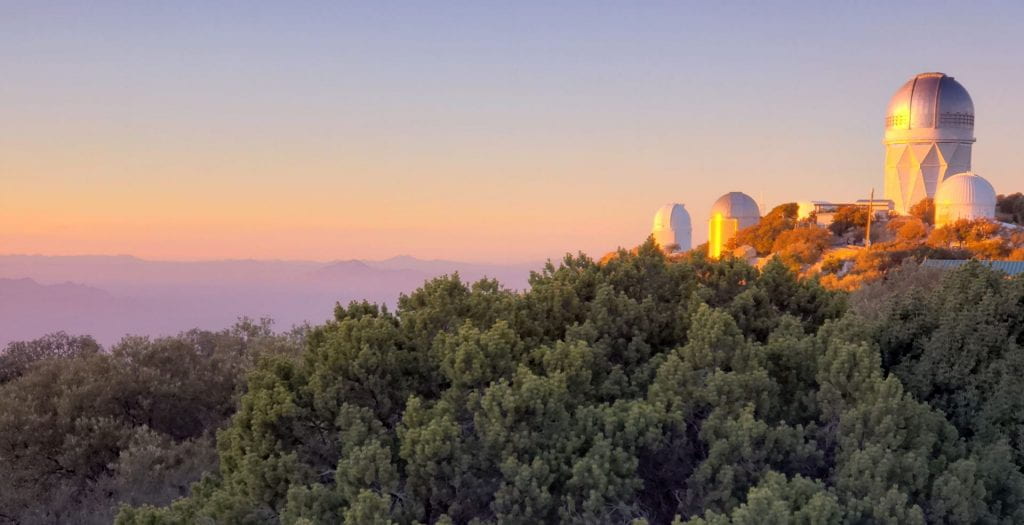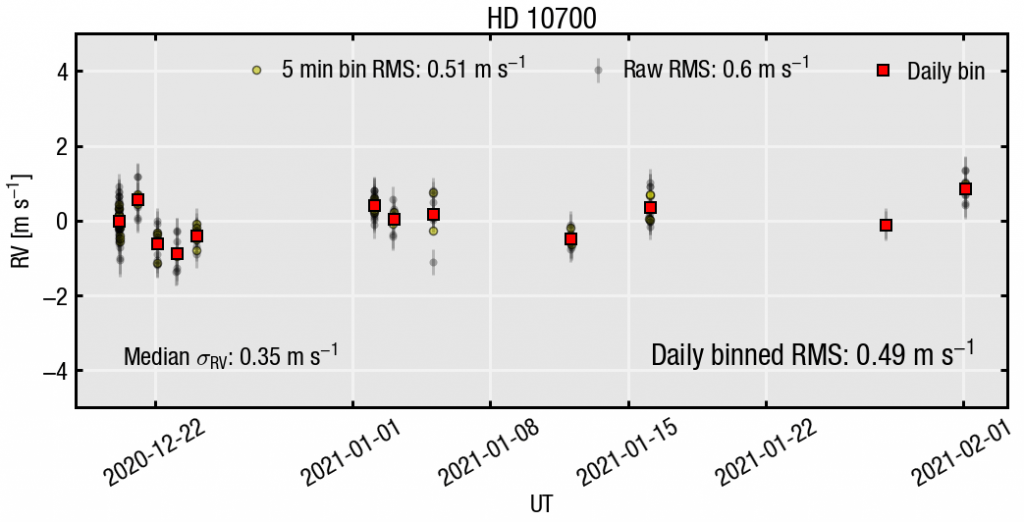It’s been a long time coming!
As of this writing, it has been almost exactly five years since NEID was selected as the design for the extremely precise radial velocity instrument to be developed through NASA and the NSF’s joint NN-EXPLORE exoplanet science program. As luck would have it, that five-year mark coincided with the instrument’s Operational Readiness Review, which is the final acceptance stage before NEID is cleared for full-time science. We are happy to report that NEID passed the Operational Readiness Review, and the next observing semester will see the spectrometer in full science operations!
A challenging year
NEID was delivered to WIYN in October 2019, and we began commissioning the instrument shortly thereafter. Commissioning is a period of time before a new telescopic instrument is released for science operations in which the instrument team works out all the bugs that are inherent in a newly-installed device, and characterizes its performance on sky for the first time. Our team spent many long nights in the 2019/2020 winter commissioning NEID. We were making good progress, but had to execute a rapid shutdown in March of 2020 when the COVID-19 pandemic caused a complete stop of operations at Kitt Peak National Observatory.

Sunset over Kitt Peak National Observatory during NEID commissioning in January 2020. [Photo credit: Paul Robertson]
So does it work?
In a word—yes! From December 2020 to April 2021, we ran a host of experiments to establish the reliability, precision, and limitations of NEID and its associated subsystems. The bulk of our time on sky was dedicated to the fairly standard practice of making many measurements of Doppler-stable stars in order to probe the spectrometer’s limiting velocity measurement precision. On the other hand, we also conducted some fairly odd experiments (lovingly dubbed “torture tests”) in which we deliberately made measurements with the telescope and instrument in strange configurations. These tests included observing targets far too close to the Moon, observing targets too low on the sky, and observing with the telescope dome covering half the primary mirror of the telescope!

NEID radial velocity measurements of the quiet star tau Ceti. Our on-sky measurements are stable to better than 50 centimeters per second, which indicates the instrument itself is even more stable.
What we learned is that across a wide variety of targets, and in a wide variety of conditions, NEID offers radial velocity measurement precision that rivals the best facilities in the world. Our measurements of stable stars consistently show variability less than 1 meter per second. This on-sky stability reflects a combination of noise sources, including the instrument, statistical fluctuations (so-called “photon noise”), and the star’s inherent atmospheric variability. Thus, while it is hard to pin down an exact number, we are assured that NEID’s instrument-limited measurement precision is significantly better than 1 meter per second.
What’s next?
Now the fun begins, as NEID is cleared for full-time science. The community is clearly excited for NEID; there is so much demand for the instrument that more than 60 percent of all WIYN nights in the 2021B observing semester will use NEID! If you are interested in proposing an observing program for NEID, we encourage you to see the WIYN Observatory’s NEID page for more details.

Pingback: Radial Velocity: NEID Spectrograph Goes to Work